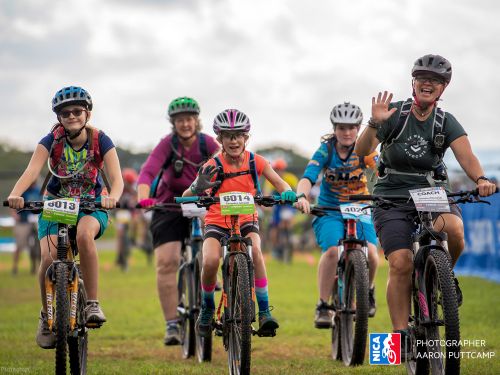Editor's note: A version of this article ran in the November issue of BRAIN.
VICTOR, Idaho (BRAIN) — It's no secret that sales of kids' bikes have boomed this year. But the even better news for the industry is new research that suggests youth cycling will continue to be a bright spot post-pandemic.
Bike riding has quickly become one of the most popular sports activities for kids. The Aspen Institute's State of Play research ranked bike riding only the 16th most popular activity before the pandemic. It's now the third most popular, behind football and flag football.
In general, the news is not great when it comes to youth activity during the pandemic: Activity is down, sports participation is down, and, looking ahead, many kids said they have no interest in returning to what had been their primary sport before the pandemic, according to the State of Play research report.
But bike riding stood out to the report's authors as a rare bright spot.
"We've seen movement during the pandemic toward individual sports," said Dr. Travis Dorsch, study director of the parent survey and founding director of the Families in Sport Lab at Utah State University.
The 29% of youth who don't intend to return to their pre-pandemic activity patterns concerns Dorsch, but it represents an opportunity for individual sports including bike riding.
"That's a frightening number for the viability of the youth sports system, but also for the health outcomes coming down the pipeline for kids," Dorsch said.
"I think it's really important that we acknowledge kids maybe don't want to go back to sports the way they were. This is our opportunity to create a new youth sport system that kids want to come back to so we can reach that 29%, which is a moving target. How do we reframe the experience, whether it's focusing on interpersonal coach-athlete features or health features or the competition itself? This looks like a real pivot point."
Dorsch's words should be music in the ears of the National Interscholastic Cycling Association, which has been trying to create a new kind of youth sport system since its foundation in 2009.
NICA emphasizes that cycling is a larger activity than just competition, something not every sport can claim. That emphasis, along with bike riding's relative perceived safety when it comes to COVID-19 infection, has helped the organization resume activity successfully this year.
"We've been able to pivot more than other sports," said Amanda Carey, NICA's vice president of programs. "Student-athlete participation is up 12% ... that's only half of our usual growth recently, but we still did pretty well."
NICA now has 31 leagues (three of which will hold their first seasons next year). Many of them had reduced or modified race schedules this fall, and some had no events at all. But almost all of them continued to hold practices, even if there was no racing.
"Everyone missed racing, but at in the end it's about getting kids outside and active, burning off anxiety and getting with their friends," Carey said.
"The thing about NICA is that 90% of the kids' riding is at team practice; that's where our sport is unique. We don't have to have competition and we don't have to travel across the state to have a really good time. Our kids just really love riding bikes."
NICA has adopted COVID safety protocols, including reducing practice groups to small "pods" to meet recommendations and mandates about maximum group size. But being an outside, non-contact sport, bike riding is seen as safer than many sports.
And that safety is key, according to the Aspen Institute report.
Concerns that their children will get sick if they resume sports is the biggest barrier for parents, the study found. And that concern grew over the course of the three surveys the study conducted this year. In May, half of parents strongly agreed or agreed that the fear of illness was a barrier to returning to sports. By September, that number had increased to 64%.
On the upside, the study found that parents' willingness to spend money on their child's chosen sport has increased since the beginning of the study.
"In September, 28% of parents said they would spend more on sports when they return, up from 21% in June," the report says. Still, the majority expect to spend about the same or less.
"They're more likely to spend more money, but they're more concerned about health outputs," Dorsch said. "It could be that, yes, parents are afraid of getting sick, but we all have cabin fever and we're trying to weigh the positives and negatives of getting back into sports."
Parents are most comfortable with their kids returning to individual "pick-up" sports. They are a bit less comfortable with "community-based sports", which might include organized cycling activities like racing or group rides.
Kids involved with racing, be it on the road, cyclocross, mountain bike, BMX or track, represent a tiny percentage of the number of kids who ride bikes. NICA has 25,000 student-athletes registered, USA BMX has about 70,000 members (including some adults). USA Cycling has a total of fewer than 60,000 licensed members, most of them adults.
Meanwhile the industry has sold millions of new kids bikes just this year. But the trends the Aspen Institute study identified, and the solutions that it recommends to combat youth inactivity, all support the continued growth in youth cycling of all types.


